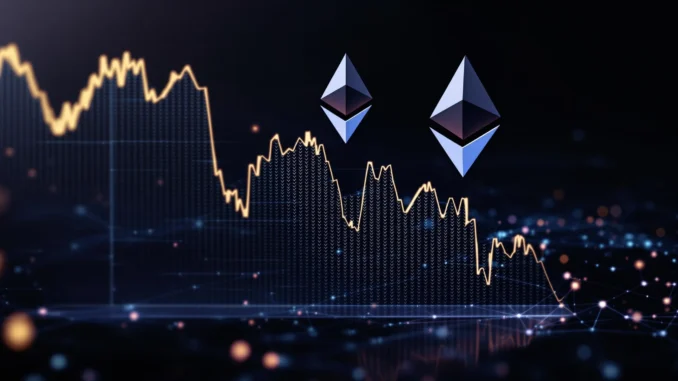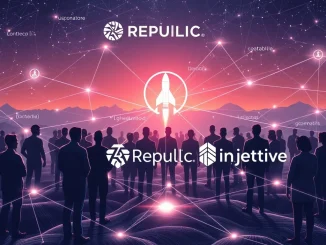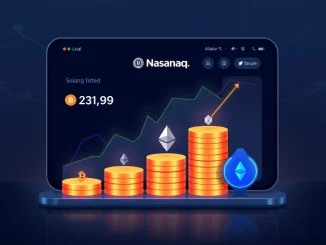
Exciting news for the Ethereum community! Are you tired of those sky-high transaction fees eating into your crypto gains? Well, you’re in for a treat. This week has brought a significant and dramatic shift in the Ethereum landscape – a massive 70% drop in Ethereum fees! Yes, you read that right. This isn’t just a minor dip; it’s a substantial decrease that’s making waves across the crypto world. Let’s dive into what’s causing this positive change and what it means for you.
Why the Sudden Plunge in Ethereum Transaction Fees?
The primary driver behind this welcome decrease in Ethereum transaction fees is the recent gas limit increase. Think of the gas limit as the engine capacity of the Ethereum network. By increasing this capacity, the network can process more transactions at once, easing congestion and bringing down the cost per transaction. According to data from IntoTheBlock, a leading crypto analytics platform, this adjustment has had an immediate and powerful effect. Let’s break down what this gas limit increase really means:
- Increased Network Capacity: A higher gas limit means more transactions can fit into each block on the Ethereum blockchain. This is like widening a highway to allow more cars to pass through simultaneously.
- Reduced Congestion: With more space for transactions, the network becomes less congested. Less congestion directly translates to lower fees as users don’t have to compete as fiercely to have their transactions processed quickly.
- More Affordable Transactions: Ultimately, the increased gas limit makes sending ETH and interacting with decentralized applications (dApps) on Ethereum significantly more affordable for everyone.
This isn’t just theoretical; the numbers speak for themselves. A 70% reduction in crypto fees is a massive win for users and the Ethereum ecosystem as a whole.
The Benefits of Lower Ethereum Fees: A Game Changer
What does this fee reduction actually mean for you, the everyday crypto user? The benefits are numerous and far-reaching:
Enhanced Accessibility for All
High Ethereum fees have long been a barrier to entry for many. For smaller transactions, the fees could sometimes outweigh the transaction amount itself! Lower fees democratize access to the Ethereum network, making it viable for:
- Small-Scale Transactions: Sending small amounts of ETH or tokens becomes economically feasible again.
- New Users: Those hesitant to use Ethereum due to cost concerns may now be more inclined to explore its potential.
- Global Adoption: Lower fees can facilitate wider adoption in regions where users are more price-sensitive.
Boost for DeFi and dApps
Decentralized Finance (DeFi) and decentralized applications (dApps) are the cornerstones of the Ethereum ecosystem. Lower blockchain costs are crucial for their growth and usability:
- Increased dApp Usage: Interacting with DeFi protocols and dApps becomes cheaper, encouraging more users to participate.
- More Complex Transactions: Users can perform more complex DeFi operations without being burdened by exorbitant fees.
- Innovation and Development: Lower fees can spur innovation and development within the Ethereum ecosystem, as developers have more room to experiment and build.
Positive Impact on the Ethereum Ecosystem
Beyond individual users and dApps, the fee reduction has broader positive implications for the entire Ethereum network:
- Increased Network Activity: Lower fees can lead to increased transaction volume and overall network activity.
- Greater Competitiveness: More affordable fees make Ethereum more competitive against other blockchains.
- Positive Sentiment: Reduced fees improve user sentiment and strengthen the overall perception of Ethereum.
Are There Any Challenges or Considerations?
While the gas limit increase and subsequent fee drop are overwhelmingly positive, it’s important to consider potential challenges and what the future might hold:
Potential for Increased Network Load
While the gas limit is increased, a significant surge in network activity could still lead to congestion and potentially drive fees back up, although likely not to previous levels. It’s a balancing act to maintain optimal network performance.
Sustainability of Low Fees
It remains to be seen if these lower fee levels will be sustained in the long term. Network usage fluctuates, and future events could impact fees. Continuous monitoring and potential adjustments may be necessary.
Focus on Layer-2 Scaling Solutions
While this gas limit increase provides immediate relief, it’s crucial to remember that Layer-2 scaling solutions like Optimism and Arbitrum remain vital for Ethereum’s long-term scalability. These solutions offer even lower fees and faster transaction speeds, and their development continues to be a priority.
Actionable Insights: What Should You Do Now?
So, what can you do to take advantage of these lower Ethereum fees?
- Explore Ethereum dApps: Now is a great time to explore DeFi protocols, NFT marketplaces, and other dApps on Ethereum without worrying as much about fees.
- Transact More Frequently: If you’ve been holding back on smaller Ethereum transactions due to cost, you can now transact more freely.
- Stay Informed: Keep an eye on network conditions and fee levels as the Ethereum ecosystem continues to evolve.
Conclusion: A Breath of Fresh Air for Ethereum
The significant Ethereum fees drop is undoubtedly a breath of fresh air for the entire ecosystem. The gas limit increase has proven to be an effective measure in reducing transaction costs, making Ethereum more accessible, user-friendly, and competitive. While challenges and ongoing development remain, this positive shift is a major step forward. It’s a relief for users, a boost for dApps, and a testament to the ongoing evolution and improvement of the Ethereum network. Get ready to experience a more affordable and vibrant Ethereum!



